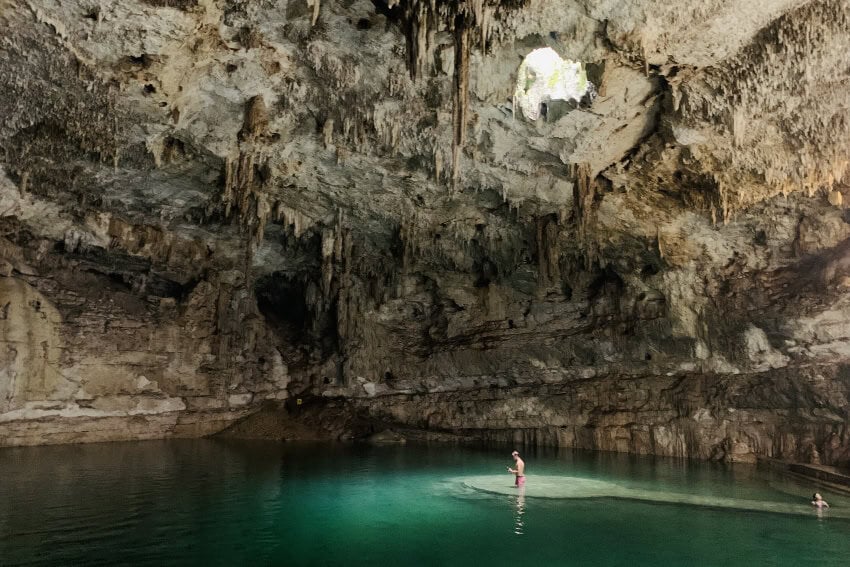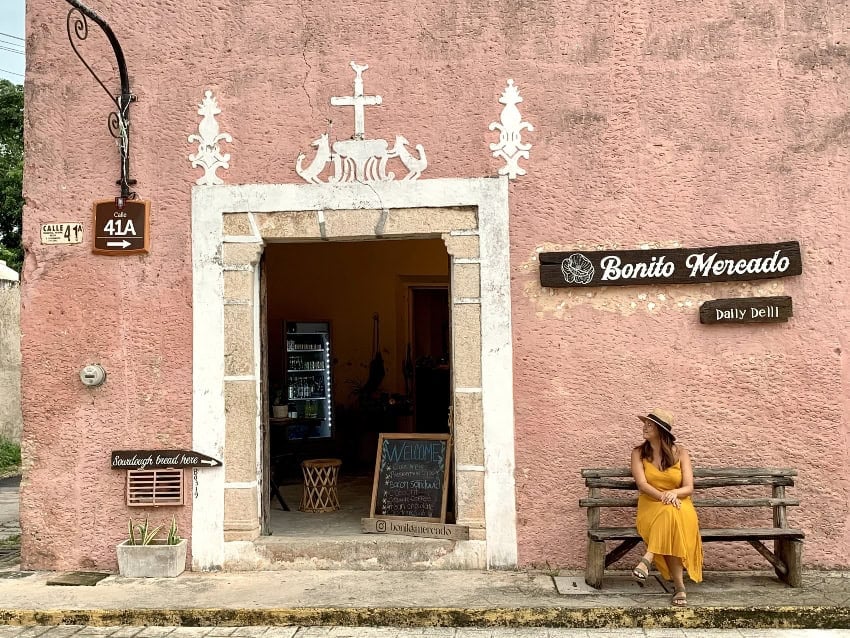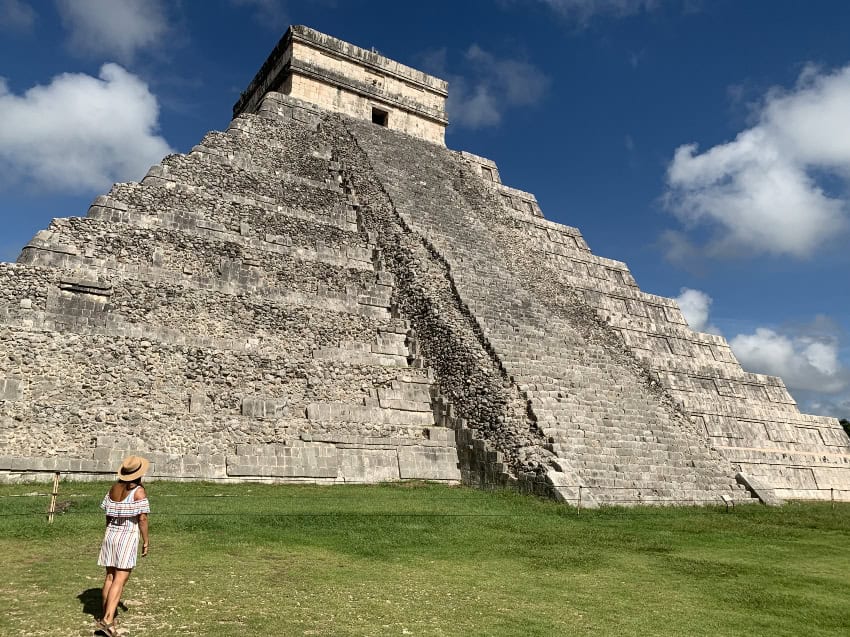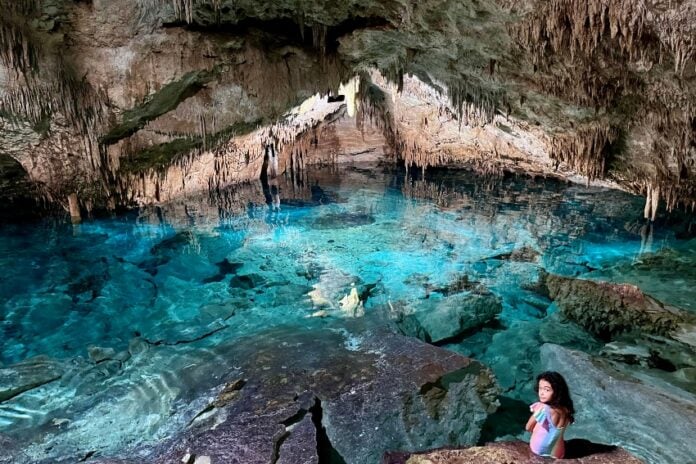And just like that, we’ve arrived at the end of this series exploring the lesser-known treasures of Mexico. We’ve wandered through vibrant colonial streets and explored pristine jungles, ancient sites and glorious wineries in different corners of the country, but I’ve saved one of my favorite experiences in Mexico for last.
If you, like me, have found yourself cooling off in the dreamy emerald natural pools of Thailand, you’re going to love the cenote circuit around Valladolid in Mexico’s Yucatán Peninsula.

I’ll never forget my first time dipping into a natural pool in Krabi in Thailand, the limestone cliffs towering above, the water clear as glass yet delightfully cold. Years later, descending a rickety wooden staircase into a cavern near Valladolid, that same feeling washed over me. It felt like descending into a different world.
While these cenotes aren’t much of a secret these days, they offer that same soul-refreshing plunge into nature’s embrace.
Thailand vs Valladolid’s cenotes
Thailand, with its Buddhist temples and long-tail boats, is a long way from Mexico — but the connection between it and Valladolid lies in the water. The experience of swimming in Thailand’s famous Sa Morakot (Emerald Pool) or the cascading tiers of Erawan Falls is strikingly similar to plunging into a Yucatán cenote. Both feature water so clear, it feels otherworldly, backdropped by lush jungle and dramatic rock formations.
The key difference between the two experiences goes beneath the surface — literally. While Thailand’s pools are open to the sky, many of Valladolid’s natural sinkholes are underground. They are formed by the collapse of porous limestone bedrock that exposes the groundwater below. Imagine Thailand’s jungle pools, then picture them hidden within mystical caves, with tree roots dangling from the ceiling and dramatic beams of sunlight piercing the darkness. That’s a cenote.
A portal to the past
Millions of years ago, what is now the Yucatán Peninsula lay submerged as a vibrant coral reef. As ice ages caused sea levels to recede, this reef was left exposed. Acidic rainwater seeped into the porous limestone, slowly dissolving the rock and carving out a complex web of subterranean caves and rivers over thousands of years.
For the ancient Maya, they were more than just swimming holes. Believed to be sacred portals to the underworld, Xibalba, cenotes were vital sources of fresh water and served as sites for rituals and offerings. Archaeologists have found artifacts like jade, gold, pottery and incense in cenotes, as well as human remains. It’s this historical context that makes cenotes all the more special.
Highlights of Valladolid

Of the 10,000 cenotes dotted around the Yucatán Peninsula, the most beautiful ones are found near Valladolid, a small town steeped in Maya tradition. Located midway between Cancún and Mérida, Valladolid is easy to reach by bus and the newly opened Tren Maya. Most people pass through here on their way to the famous Chichén Itzá ruins, but miss out on experiencing the town and the cenotes surrounding it.
Right in the heart of Valladolid lies Cenote Zací, a massive, semi-open cenote with high, cliff-like walls and a walkway that circles the perimeter, revealing glorious elevated views. I highly recommend venturing further out of town to the Dzitnup Cenotes park, where the admission fee gives you access to two stunning covered cenotes, Xkeken and Samula.
Swim in the shallow waters of Xkeken, where dramatic stalactites hang so low from the cavern ceiling, they’re close enough to touch. Then plunge into the electric-blue water that glows under the sunlight at Cenote Samula.
Arguably the most photogenic is Cenote Suytun, a circular cavern with a single hole in the ceiling, from which a powerful beam of sunlight streams down during certain times of the day. Make sure to visit between noon and 2 p.m., when the sun’s rays hit the circular stone platform in the middle of the chamber, illuminating the crystal-clear water like a spotlight.
Located on the grounds of a beautiful hacienda, Cenote Oxman is one of my daughter’s favorite spots, where you can swing Tarzan-style from a rope and splash into the deep, cool water below. You can also grab one of the rubber tubes and dip under the man-made waterfall.
Gateway to ancient ruins
While cenotes are magical, a visit to Valladolid is incomplete without exploring Chichén Itzá, one of the most popular and most well-preserved ruins in Mexico. Just a 45-minute drive away, the ancient Maya city is home to the iconic El Castillo pyramid, a testament to the civilization’s advanced understanding of astronomy and mathematics. Make sure to get there early, before the tour buses descend by 9 a.m., and prepare to spend at least three hours at the site.

For a more grounding experience, make your way to the less-crowded Ek Balam, just a 30-minute drive north of Valladolid. The name Ek Balam translates to “Black Jaguar,” and the site is renowned for its remarkably preserved stucco facades and intricate carvings. What I love most about this site is the opportunity to climb the main pyramid, the Acropolis, which, at over 90 feet high, offers panoramic views of the surrounding jungle canopy.
Tucked deep within the jungle, the ancient city of Coba is another little-visited site just an hour’s drive east of Valladolid. Coba stands out for its network of ancient stone causeways called sacbeob and numerous stelae, stone slabs with intricate hieroglyphic inscriptions that provide insights into Mayan history. To explore the sprawling site, my family hired a tricycle that was pedal-powered by a local guide, from whom we learned so much.
A luscious waterworld
Travel is often about finding echoes of places we’ve loved in new, unexpected destinations. The sense of wonder I felt in the natural pools of Thailand was something I thought was unique to that corner of the world. But in Valladolid, I found it again, deeper and with a richer story to tell.
If you’re longing for refreshing dips in a place that feels both wild and sacred, Valladolid’s cenotes might just be the answer.
Nellie Huang is a travel writer and book author who’s traveled to 150 countries but has a soft spot for Mexico. She’s the author of Lonely Planet’s Mexico guidebook and has written hundreds of articles on Mexico for various publications. Read about her adventures worldwide on wildjunket.com and follow her updates on Instagram @wildjunket.
